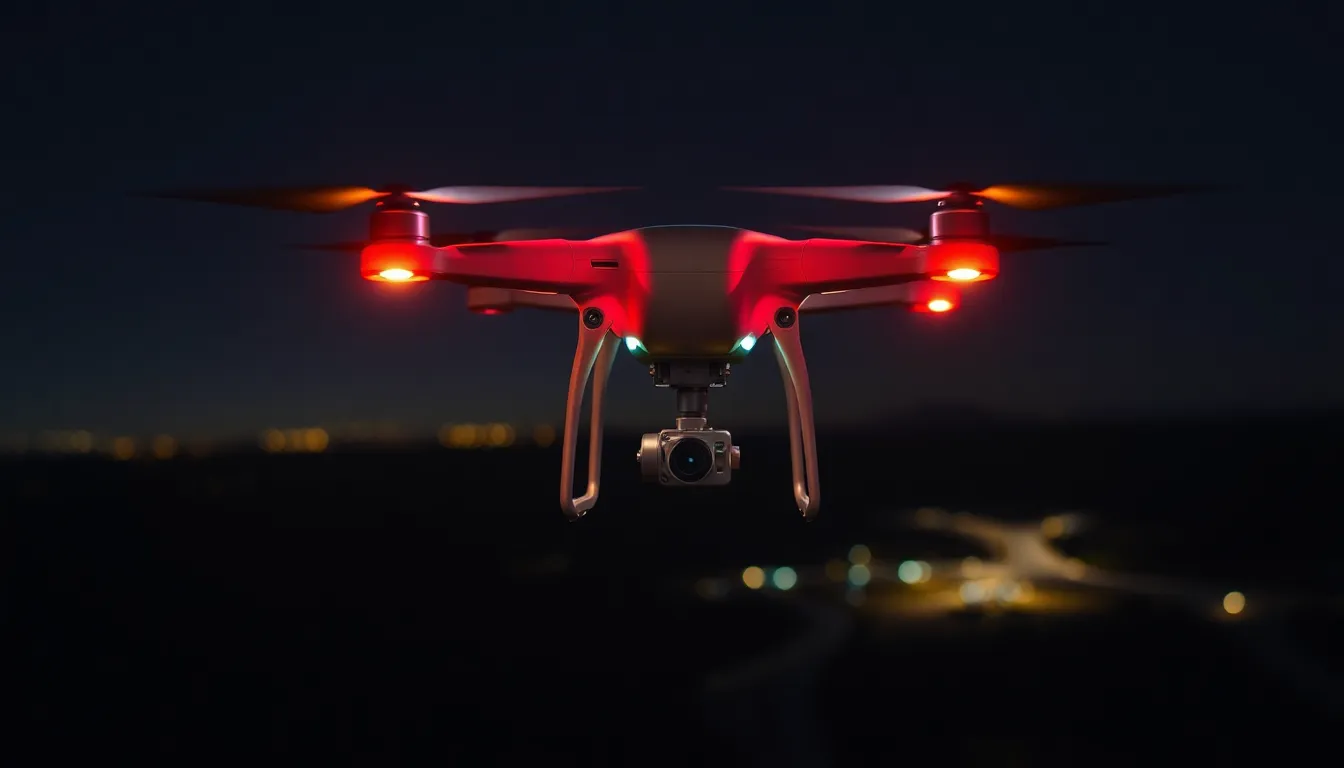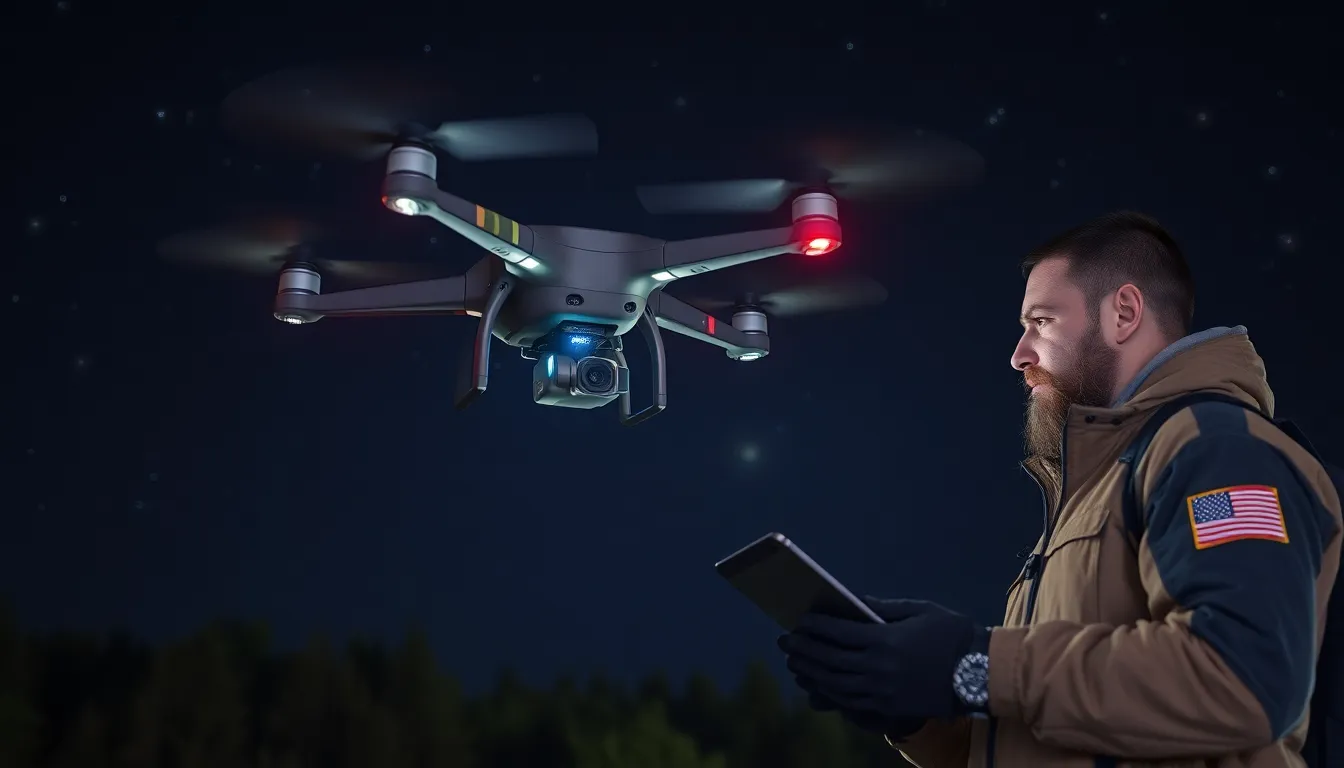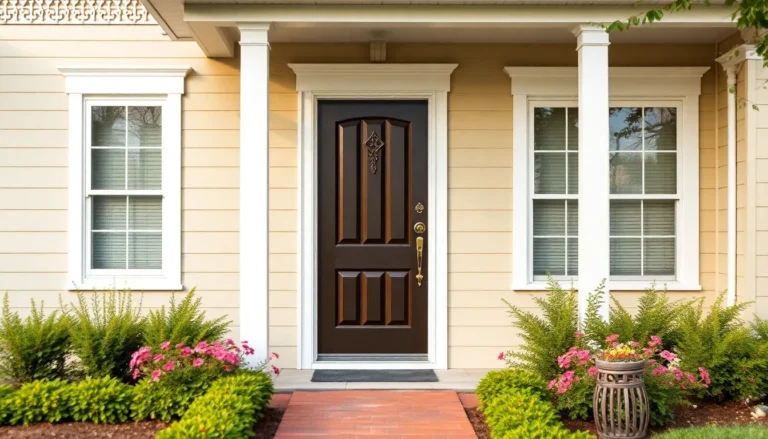When the sun dips below the horizon and the stars take center stage, most drones call it a night. But not the savvy models equipped with night mode. These high-flying gadgets don’t just twinkle in the dark; they’re ready to capture stunning aerial shots and navigate tricky terrains like a pro. Imagine a drone that’s not afraid of the dark—it’s like having a superhero in the sky, minus the cape and spandex.
Table of Contents
ToggleOverview Of Drones With Night Mode
Drones with night mode capabilities operate effectively in low-light conditions. These models feature advanced technologies that enhance visibility and navigation during nighttime missions.
What Is Night Mode?
Night mode refers to the specialized functionality that allows drones to capture images and videos in low-light environments. This capability often includes the use of infrared sensors and advanced imaging technologies. Drones equipped with night mode can detect thermal signatures and enhance visual clarity in darkness. Operators utilize these features for various applications, including surveillance, search and rescue, and wildlife monitoring.
Importance Of Night Mode In Drones
Night mode enhances the versatility of drones, making them invaluable for specific tasks. Security professionals rely on drones with night mode for effective surveillance in complete darkness. Search and rescue teams benefit from improved visibility to locate missing persons at night. Wildlife researchers utilize night mode for observing nocturnal animals without disturbing their natural behaviors. These applications demonstrate the critical role of night mode in expanding the functionality and effectiveness of drones in various fields.
Key Features Of Drones With Night Mode

Drones with night mode offer several essential features that enhance their functionality in low-light conditions. Their advanced systems significantly improve operations after dark.
Advanced Imaging Technology
Advanced imaging technology integrates infrared sensors and specialized cameras. This technology allows drones to capture high-quality images and videos in near-total darkness. Utilizing thermal imaging, drones detect heat signatures from objects and living beings, which facilitates surveillance and monitoring tasks. Various models leverage multi-spectral sensors to gather data and observe nocturnal wildlife. These capabilities enable users to conduct thorough analyses and improve decision-making across multiple applications.
Enhanced Low-Light Performance
Enhanced low-light performance characterizes drones equipped with night mode. Improved sensor sensitivity ensures effective operation even in minimal light. Many models include built-in LED lights that illuminate their surroundings, further aiding navigation. As a result, pilots maintain control and achieve precise positioning in challenging environments. Enhanced performance extends to the drone’s ability to avoid obstacles with increased accuracy. Therefore, these drones excel in search and rescue missions, offering safety and reliability amidst darkness.
Popular Drones With Night Mode
Drones designed for night mode offer unique functionalities. These models excel in low-light conditions, making them ideal for various applications.
Drone Model 1
The DJI Mavic 2 Enterprise Dual ranks high among night mode drones. It features a thermal sensor and a 4K camera that enhances low-light performance. These capabilities enable operators to conduct search and rescue missions effectively. Integrated LED lights assist with navigation during nighttime flights. Users appreciate its compact design, allowing for easy transport and deployment in the field. Advanced software supports real-time video streaming, providing critical data during operations.
Drone Model 2
The Parrot Anafi USA stands out with its impressive night mode features. This drone incorporates a 32x zoom camera alongside a thermal imaging sensor. These attributes provide exceptional clarity in near-darkness, catering to surveillance and inspection tasks. Operators can capture detailed imagery while maintaining discretion. Its rugged build ensures durability in challenging environments, making it a reliable option for law enforcement and wildlife monitoring. This drone’s flexibility offers users a multifaceted tool for various applications after dark.
Drone Model 3
The Skydio 2 excels with its autonomous flying capabilities and night mode functions. Equipped with advanced AI, it navigates complex terrains effortlessly. This model captures stunning footage even in low-light conditions. Users benefit from its obstacle avoidance technology, ensuring safe operations at night. Built-in HDR capabilities further enhance image quality during nighttime flights. Professionals, including filmmakers and emergency responders, find it particularly useful for tasks requiring precision in darkness.
Applications Of Drones With Night Mode
Drones equipped with night mode technology serve crucial roles in various fields, demonstrating their effectiveness in low-light conditions.
Search And Rescue Operations
Search and rescue missions often occur during nighttime, making drones with night mode indispensable. They enhance visibility through thermal imaging, locating missing individuals even in darkness. Advanced sensors detect heat signatures from people, pets, or vehicles, significantly increasing the chances of successful rescues. Operators can navigate complex terrains efficiently while providing real-time data to ground teams, ensuring prompt responses. Drones like the DJI Mavic 2 Enterprise Dual have become popular choices in this domain due to their thermal and 4K camera integration.
Surveillance And Security
Security professionals utilize drones with night mode for comprehensive surveillance, especially during nighttime operations. Enhanced visual clarity allows monitoring of large areas, effectively deterring potential threats. These drones’ infrared sensors capture detailed images, aiding law enforcement in crime prevention and investigation. Continuous footage from aerial perspectives assists in gathering evidence and maintaining public safety. The Parrot Anafi USA, famed for its 32x zoom and thermal imaging capabilities, exemplifies how technology improves situational awareness in security efforts.
Wildlife Monitoring
Wildlife researchers employ night mode drones to observe nocturnal animals without disturbing their habitats. Capturing images in low-light environments aids in studying animal behavior, migration patterns, and habitats. Using drones reduces human interference, allowing for more accurate data collection in natural settings. The ability to monitor environmental changes at night offers insights into wildlife conservation strategies. These drones serve as valuable tools for researchers seeking to enhance their understanding of ecosystems, all while preserving the dignity of wildlife activities.
Drones with night mode capabilities are revolutionizing how professionals operate in low-light conditions. Their advanced imaging technology and infrared sensors enable effective navigation and high-quality footage after dark. This innovation not only enhances safety in search and rescue missions but also provides critical tools for security and wildlife research.
As these drones continue to evolve, their applications will expand further, offering new possibilities for various industries. The ability to operate seamlessly in darkness positions night mode drones as indispensable assets for those needing reliable aerial support when the sun goes down.



